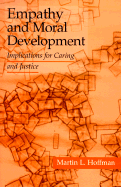Book contents
- Frontmatter
- Contents
- Acknowledgments
- 1 Introduction and Overview
- Part I Innocent Bystander
- Part II Transgression
- Part III Virtual Transgression
- 7 Relationship Guilt and Other Virtual Guilts
- Part IV Is Empathy Enough?
- Part V Empathy and Moral Principles
- Part VI Culture
- Part VII Intervention
- References
- Author Index
- Subject Index
7 - Relationship Guilt and Other Virtual Guilts
Published online by Cambridge University Press: 05 June 2012
- Frontmatter
- Contents
- Acknowledgments
- 1 Introduction and Overview
- Part I Innocent Bystander
- Part II Transgression
- Part III Virtual Transgression
- 7 Relationship Guilt and Other Virtual Guilts
- Part IV Is Empathy Enough?
- Part V Empathy and Moral Principles
- Part VI Culture
- Part VII Intervention
- References
- Author Index
- Subject Index
Summary
Once children have Transgression → Guilt scripts and the awareness of harming others makes them feel guilty, they may feel guilty any time they think they committed a transgression, even when they did not. I call this virtual guilt, and the presumed harmful act, virtual transgression. In virtual transgressions one has not caused another's distress; at least not knowingly, but blames oneself for it anyway. This is not a new concept: One of the definitions of guilt in Webster's Ninth New Collegiate Dictionary (1985) is “feelings of culpability especially for imagined offenses” (p. 542).
The developmentally earliest instances of virtual transgressions were reported by Zahn-Waxler et al., (1979). Children 15 to 20 months old who encountered their mother looking sad or sobbing for no apparent reason, would look sad themselves, approach and try to comfort the mother. This suggests they felt empathic distress (but also perhaps some anxiety, as this was their mother, their source of security). More important for present purposes, about a third of the infants seemed to blame themselves for the mother's distress, saying something like “I sorry, Mommy, did I do anything wrong?” or spanking themselves. There is no evidence they actually felt guilty: They could have simply imitated the behavior of others in similar situations. But there is evidence their behavior reflects at least a rudimentary form of self-blame: In laboratory assessments 5 years later, infants who showed this guiltlike behavior produced more guilt themes than the infants who did not (Cummings, Hollenbeck, Iannotti, Radke-Yarrow, & Zahn-Waxler, 1986).
- Type
- Chapter
- Information
- Empathy and Moral DevelopmentImplications for Caring and Justice, pp. 175 - 194Publisher: Cambridge University PressPrint publication year: 2000



